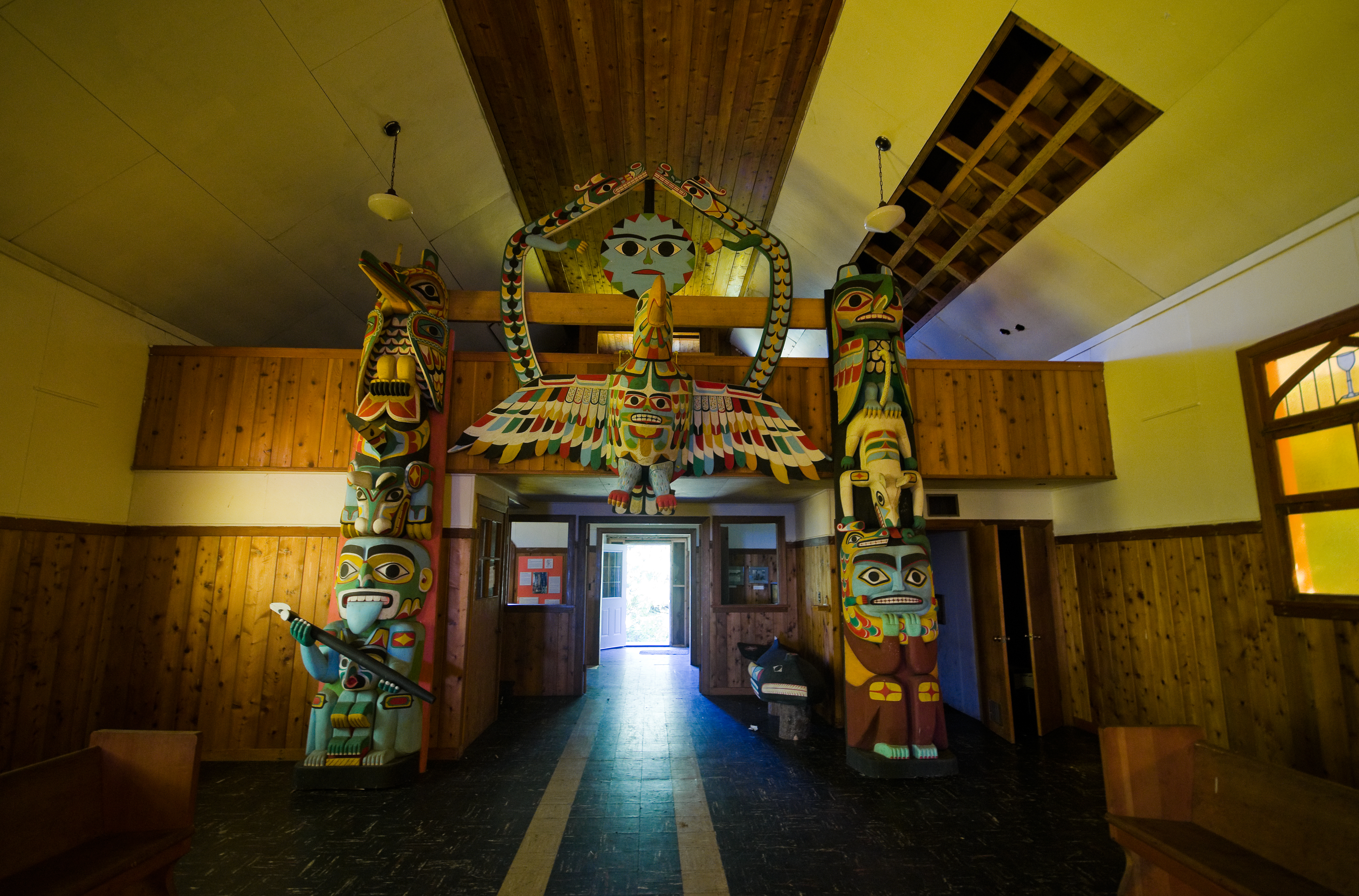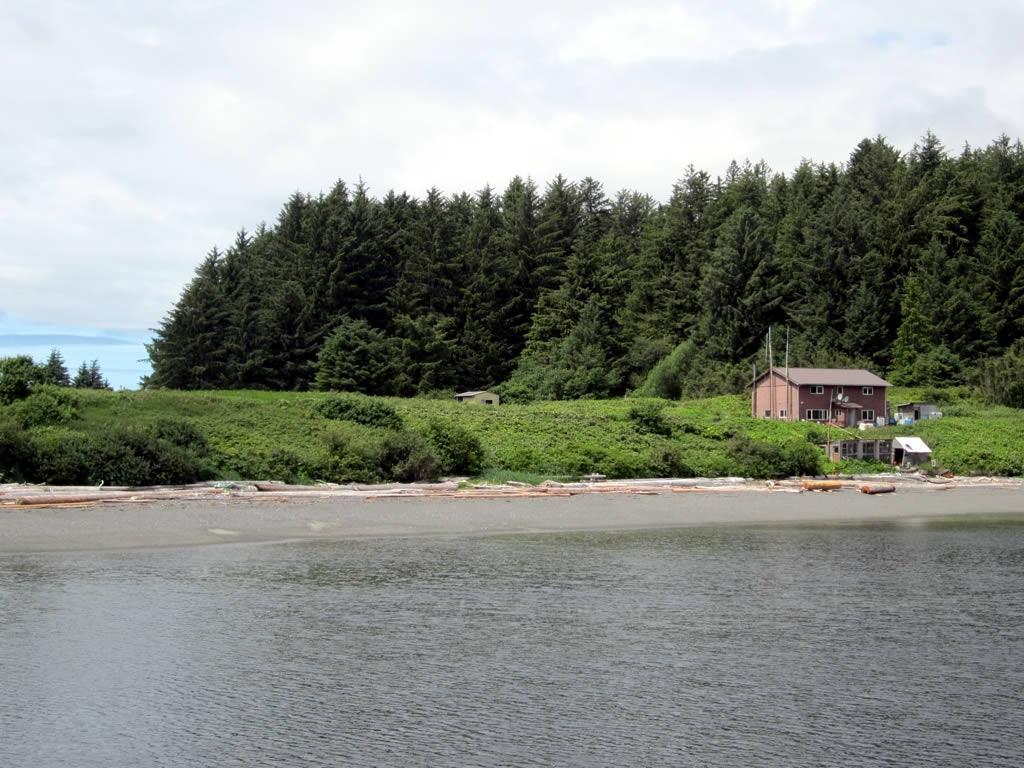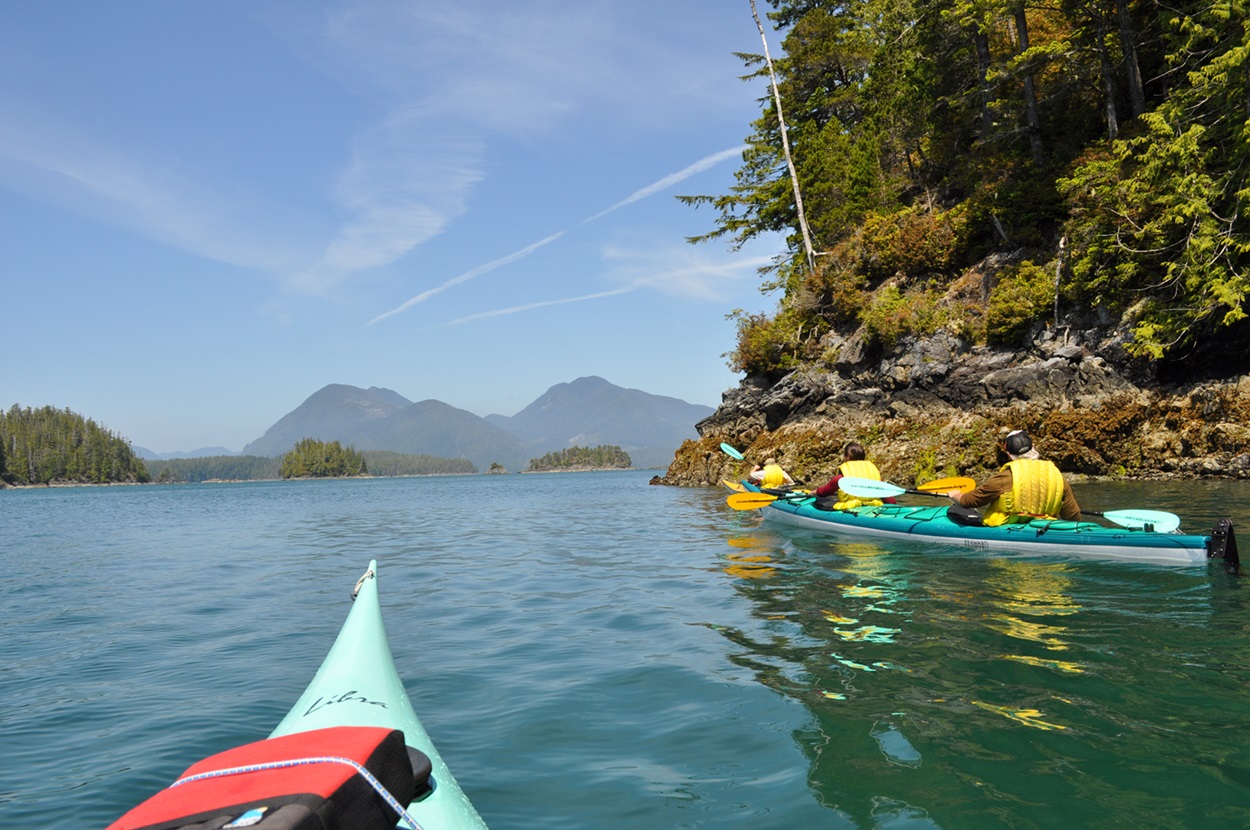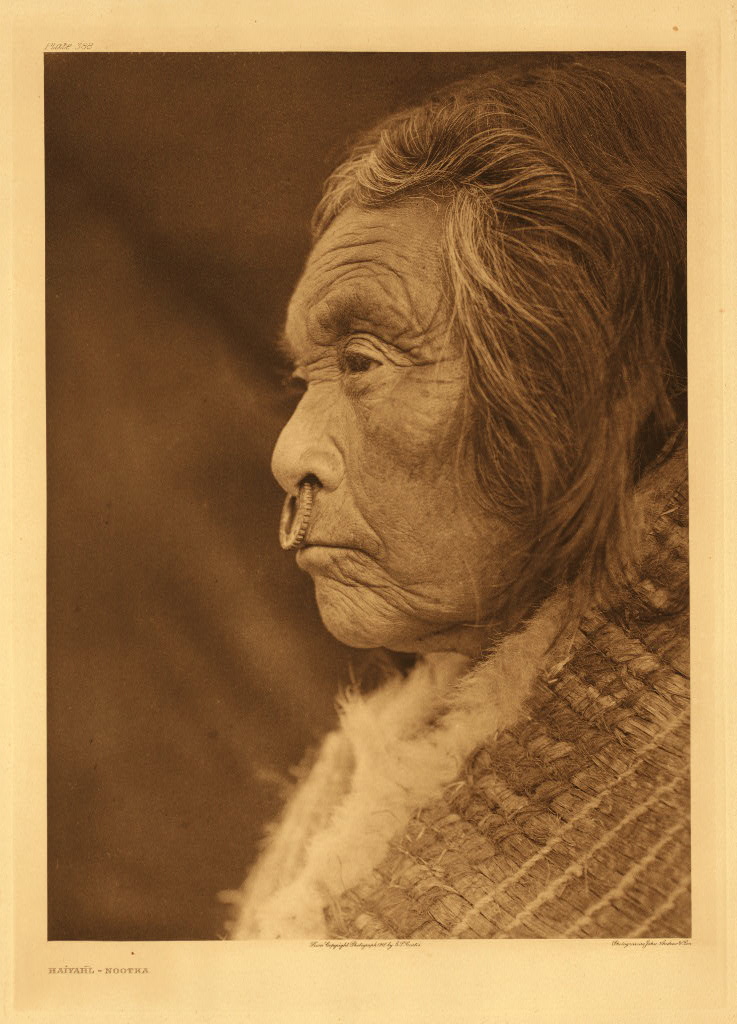The Mowachaht and Muchalaht are Nuu-chah-nulth First Nations which formally amalgamated in the 1950s. Together, their territory includes parts of the west coast of Vancouver Island. As of September 2018, the federal government reports the registered population to be 613. Along with other Nuu-chah-nulth Tribal Council nations, the Mowachaht-Muchalaht are currently in stage four of a six-stage treaty process in British Columbia to attain self-government.
Territory and Population
The Mowachaht and Muchalaht are Nuu-chah-nulth. The Mowachaht formerly consisted of two independent groups — the Tahsis and Tlupana Inlet communities — which amalgamated as a result of European-introduced diseases ( smallpox, tuberculosis and measles), as well as prolonged warfare with other Indigenous nations. Mowachaht traditional territories include the outer coast of Nootka Island, Nootka Sound, Tahsis and Tlupana Inlets, and Yuquot and Coopte villages.
The traditional territories of the Muchalaht include Muchalaht Inlet and the Gold River valley. Their main villages included Cheeshish and Ahaminaquus. In the 1950s, the Muchalaht officially merged with the Mowachaht and are now a unified First Nation numbering 613 registered members, as of 2018. They also control 18 reserves totaling 388.30 hectares of territory.
Traditional Life
The Mowachaht people were (and still are) a fishing community. The Muchalaht, unlike most Nuu-chah-nulth, lived inland and adapted to river and inland environments. Rich salmon streams, elk and deer were important for subsistence.
Mowachaht-Muchalaht bands lived in large plank houses (each with four to six families) that could be easily taken apart and rebuilt when the bands travelled to and from their winter and summer homes or went hunting, foraging or fishing (see also Architectural History: Indigenous People).
Society
Mowachaht-Muchalaht society was traditionally divided into chiefs (the highest ranking members of society), commoners and slaves (people who were captured during battles and made to be the servants of chiefs).
One of the most well-known Mowachaht (and more generally, Nuu-chah-nulth) chiefs was Maquinna, who met James Cook in Nootka Sound in the late 1700s. For generations, the name Maquinna became that of the highest-ranking chief of the Mowachaht people. This chief inherited special rights to territory, histories and cultural customs. Hereditary chiefs retain these special privileges to this day.
In the early 20th century, a Muchalaht man inherited the Maquinna title of Mowachaht, and the remaining Muchalaht who had not died of warfare or disease in the early colonial period moved to the Mowachaht village of Yuquot. Since the official amalgamation of the two nations, the Mowachaht-Muchalaht have been governed by both hereditary and elected chiefs and councillors.
Culture
Historically, the Nuu-chah-nulth have had a strong ceremonial culture, characterised by feasting and entertainment with song, dance, contests and theatricals (see also Potlatch). The Nuu-chah-nulth have also been known for their stunning woodwork, including canoes, totem poles, multifamily houses and other products hand-crafted out of fine cedar (see also Northwest Coast Indigenous Art).
Yuquot and Whaling
Yuquot (meaning “where the wind blows from all directions”) is a highly spiritually and culturally significant place for the Mowachaht-Muchalaht. Yuquot — located in Nootka Sound — was where chiefs had properties and built villages for their people. There was once reportedly over 1,000 people living in Yuquot before the arrival of Europeans.
Yuquot was also home to a whalers’ shrine — a house-like structure used in the spiritual preparations for whale hunts. Whaling was an important aspect of Nuu-chah-nulth history. In addition to its economic value, whaling was essential to Nuu-chah-nulth culture and spirituality. It was reflected in legends, family names, songs and place names.
After a controversial and disputed “purchase” of the shrine, the American Museum of Natural History in New York gained its possession and contents in the early 1900s (see also George Hunt: Controversy). The original owners of the shrine, the Mowachaht, voted to formally request its return in 1996. The shrine, and the Mowachaht’s efforts to reclaim it, was the subject of the film The Washing of Tears (Hugh Brody, 1994). Previously designated a historic site under the name Nootka in 1923, it was re-commemorated by the federal government as a national historic site in 1997, using the more correct name of Yuquot.
Language
The Mowachaht-Muchalaht speak a dialect of Nuu-chah-nulth (Nuučaan̓uɫ) called Northern Nuučaan̓uɫ (see also Nuu-chah-nulth: Language). This is an endangered language; as of 2015, there are only 20 fluent speakers, 12 speakers who somewhat speak or understand the language, and 29 learning speakers (see also Northwest Coast Language Families and Indigenous Languages in Canada).
Religion and Spirituality
The Nuu-chah-nulth belief system centres on a Creator being as well as spirits whose powers can be used to bring peace and fortune. The Nuu-chah-nulth believe that all life forms have a spirit, and should therefore be respected and appreciated. Shamans ensured the spiritual health of the people by practising ancient medicines and healing rituals to cure illness and restore balance to the soul (see also Indigenous People: Religion and Spirituality).
Re-incarnation: the Story of Luna
Whales hold an important place in Mowachaht-Muchalaht spirituality. Killer whales are particularly revered as protectors of the seas. It is for this reason that when a lone killer whale was found in Mowachaht-Muchalaht territory (Gold River Inlet) in July 2001, it attracted much attention.
Since killer whales live in pods (groups), the government made attempts to reunite the whale — known as Luna to the general public — with its pod in the San Juan Islands of Washington State. To the Mowachaht-Muchalaht, Luna (whom they refer to as Tsu-xiit) was not a stray killer whale, but the incarnation of a recently deceased chief, Ambrose Maquinna. The chief had told his people that he would return to his community as a whale; Luna emerged a few days after his death.
Determined to keep Luna in their territory, the Mowachaht-Muchalaht began a nine-day standoff during which they diverted the whale away from pens set up by the government in order to catch it. These highly publicized demonstrations encouraged discussion between governmental officials and the Mowachaht-Muchalaht First Nation. The two groups eventually began a consultative process to discuss the fate of Luna. Unfortunately, while negotiations ensued, Luna made contact with a large tugboat and was killed in 2006.
The story of Luna exemplifies Mowachaht-Muchalaht beliefs in reincarnation and a worldview in which nature and culture are connected in a deeply spiritual way. It also illustrates the need for consultation between the Canadian government and First Nations over matters concerning their traditional territory or their spiritual beliefs.
Colonial History
Prior to the formation of the Mowachaht, the group at Yuquot was the first Nuu-chah-nulth people to have extensive contact with Europeans. They traded sea otter pelts with Captain James Cook in 1778, and traded with his ships. Cook’s crew found that the sea otter pelts could be sold for great profit in China, and a maritime fur trade began in 1785. Yuquot, known as Nootka and Friendly Cove, soon became a major trading centre. The Yuquot, led by Chief Maquinna, controlled the trade at Nootka Sound, and became wealthy and powerful. In 1789, a Spanish expedition built a military post at Yuquot, and seized British trading ships, resulting in the Nootka Sound Controversy. By the mid-1790s, trade declined at Nootka Sound. The economic hardships that followed may have influenced Maquinna to capture the trading ship Boston in 1803, ending the sea otter pelt trade at Nootka Sound.
With the increasing permanence of Europeans on west coast of Vancouver Island, the Mowachaht-Muchalaht were forcibly removed from their homelands. Forced onto reserves by the late 19th century, the Mowachaht-Muchalaht were made to assimilate to White, Christian culture through federal programs and policies such as residential schools. The Mowachaht-Muchalaht have also been relocated twice: once in the 1960s to Gold River, and then again in the 1990s to Tsaxana, where they currently live. In spite of these colonial policies, the Mowachaht-Muchalaht have survived and continue to preserve and protect their culture.
Contemporary Life
Today, the Mowachaht-Muchalaht operate a number of tourist facilities on their traditional territory at Yuquot, including docks and cabins. A historic Catholic church now serves as a cultural centre and museum for the First Nation.
The Mowachaht-Muchalaht are one of the 14 nations represented by the Nuu-chah-nulth Tribal Council, an association founded in 1958 that provides various services to approximately 9,500 registered members, including child welfare, education, employment training and other socio-economic programs that support health and development.
Along with other Nuu-chah-nulth Tribal Council nations, the Mowachaht-Muchalaht are currently in stage four of a six-stage treaty process in British Columbia to attain self-government.

 Share on Facebook
Share on Facebook Share on X
Share on X Share by Email
Share by Email Share on Google Classroom
Share on Google Classroom









